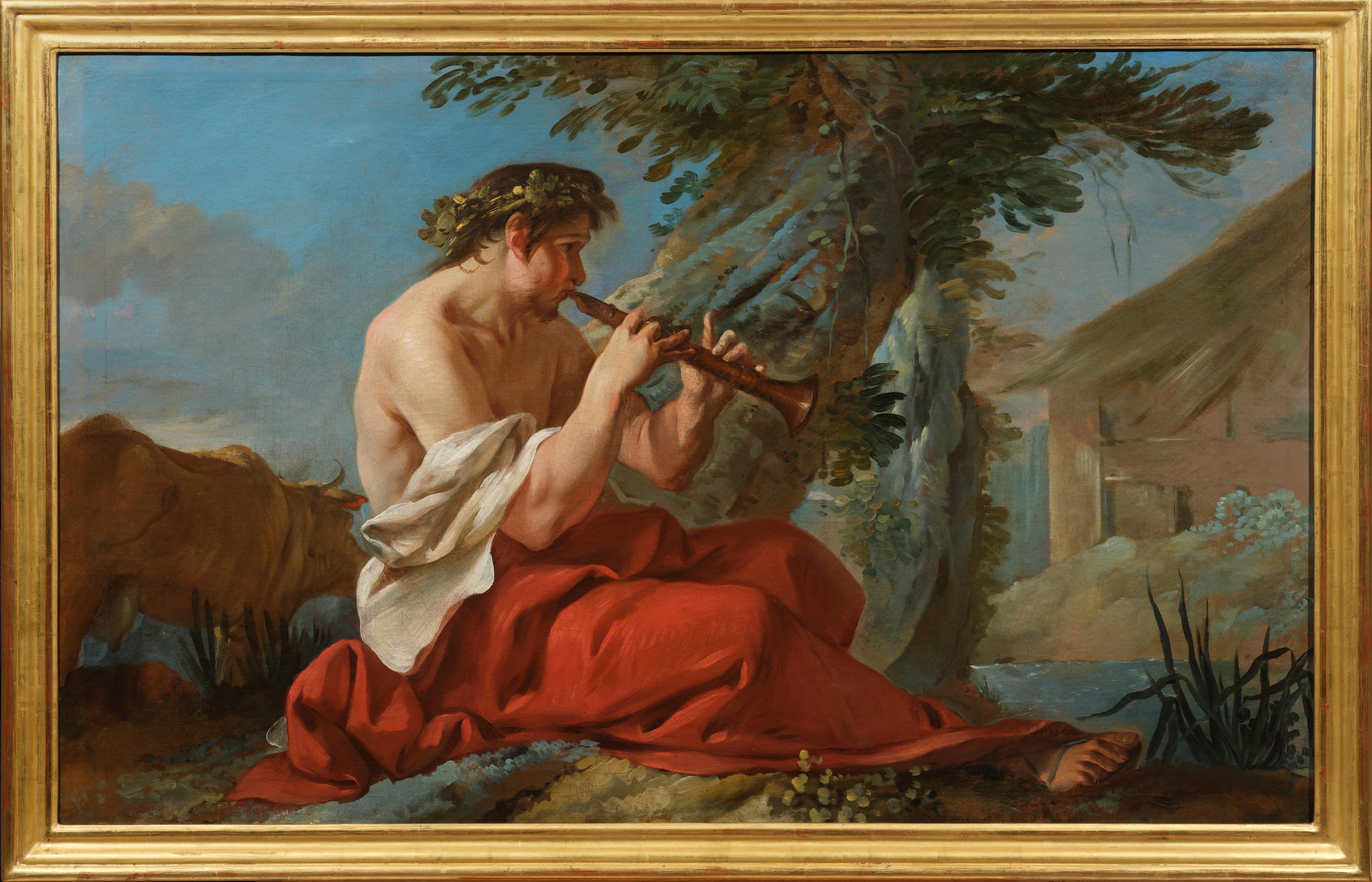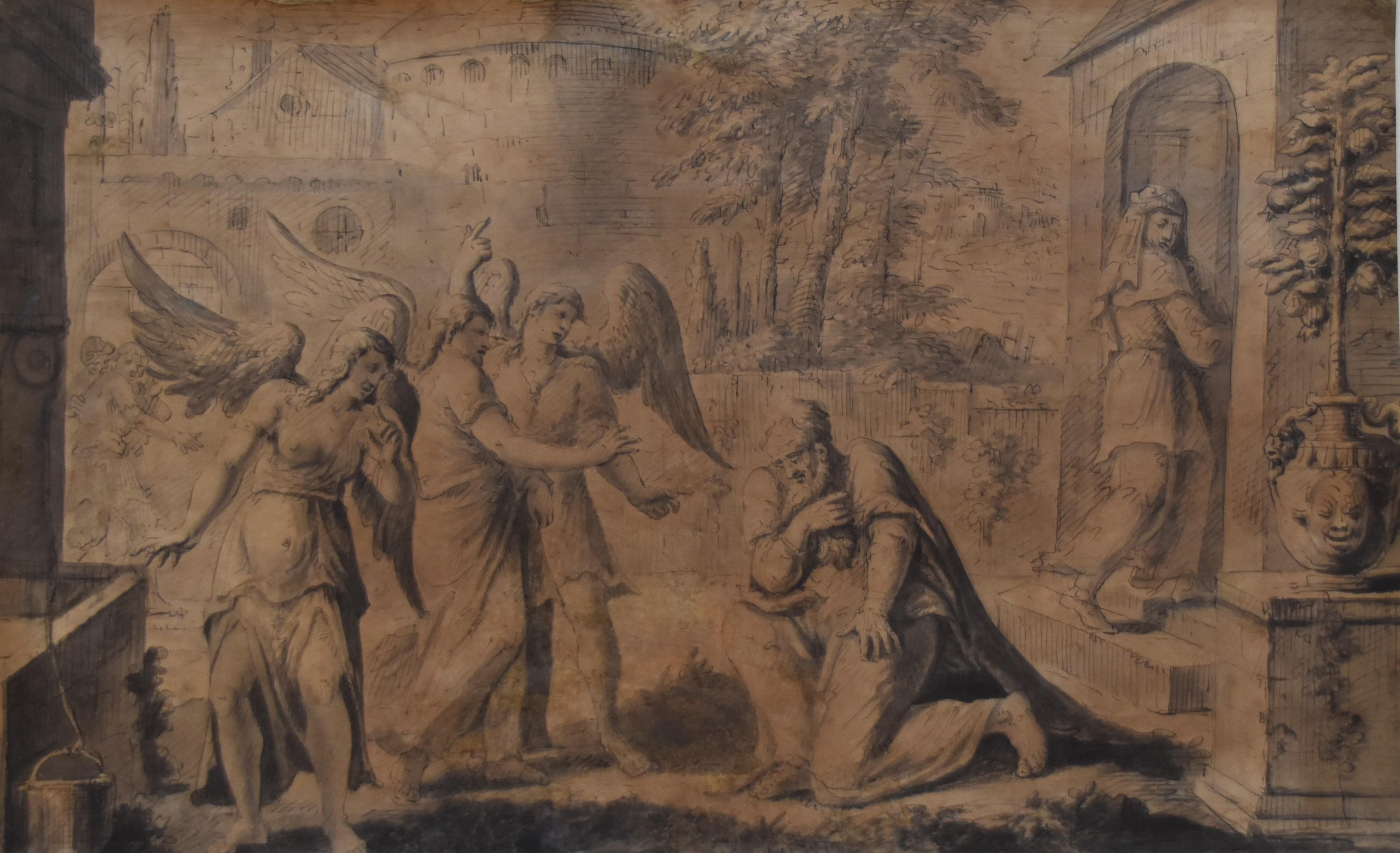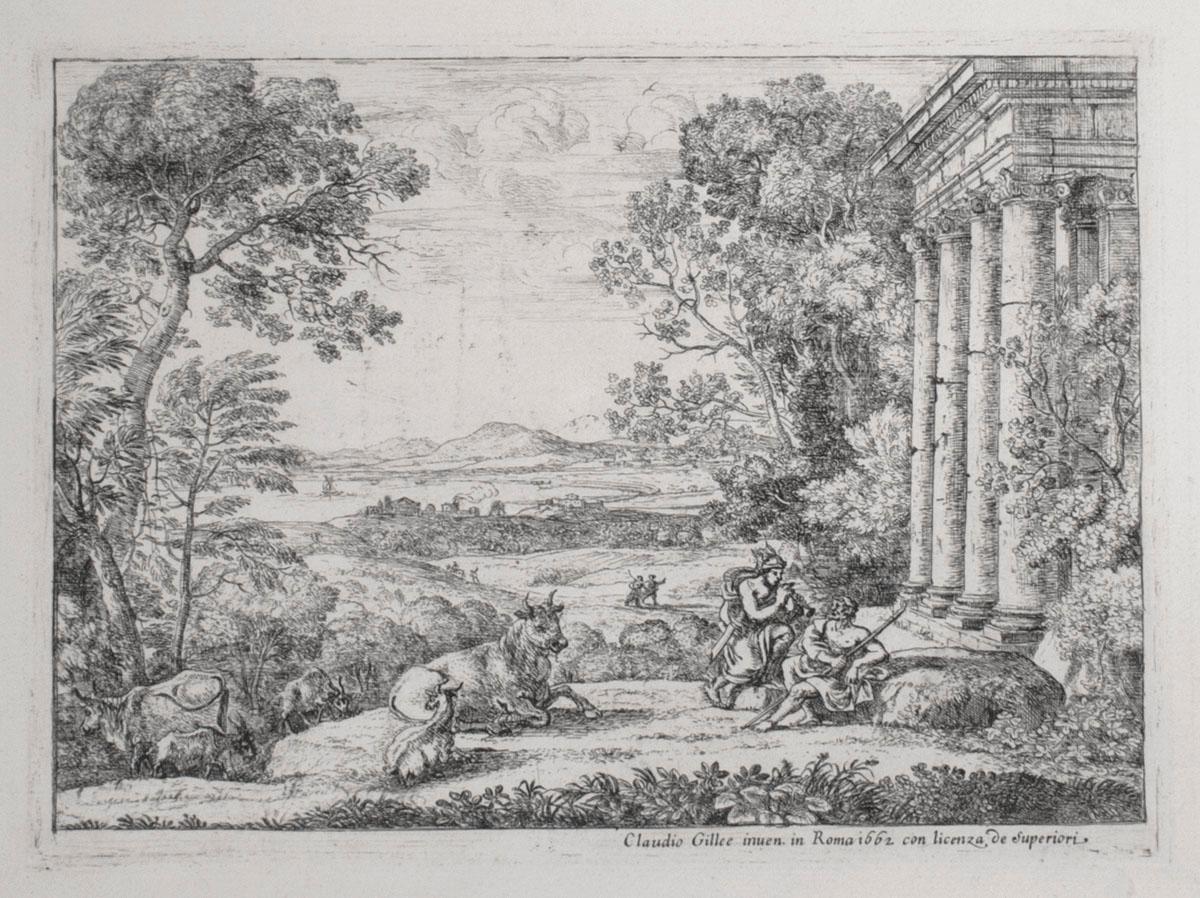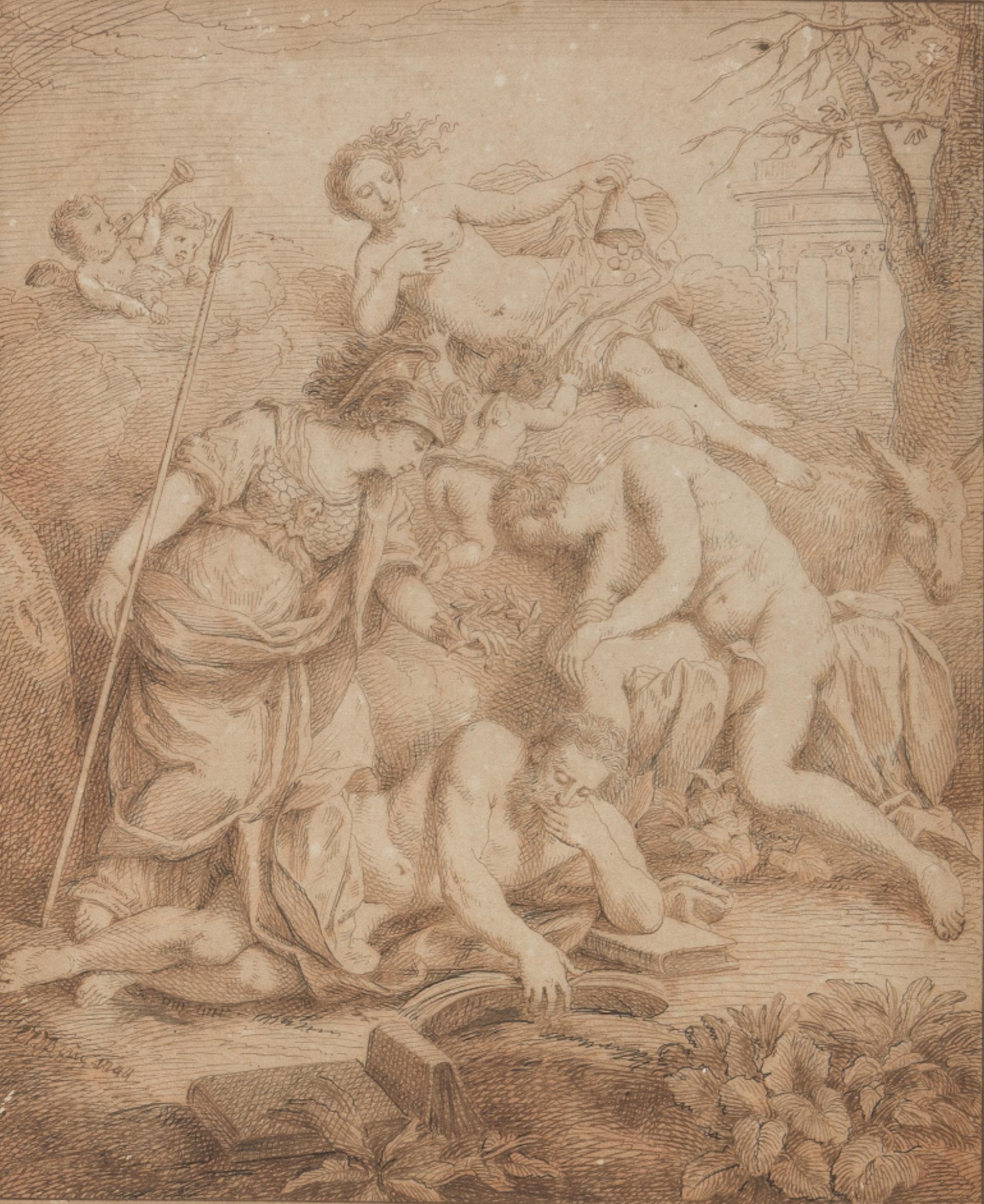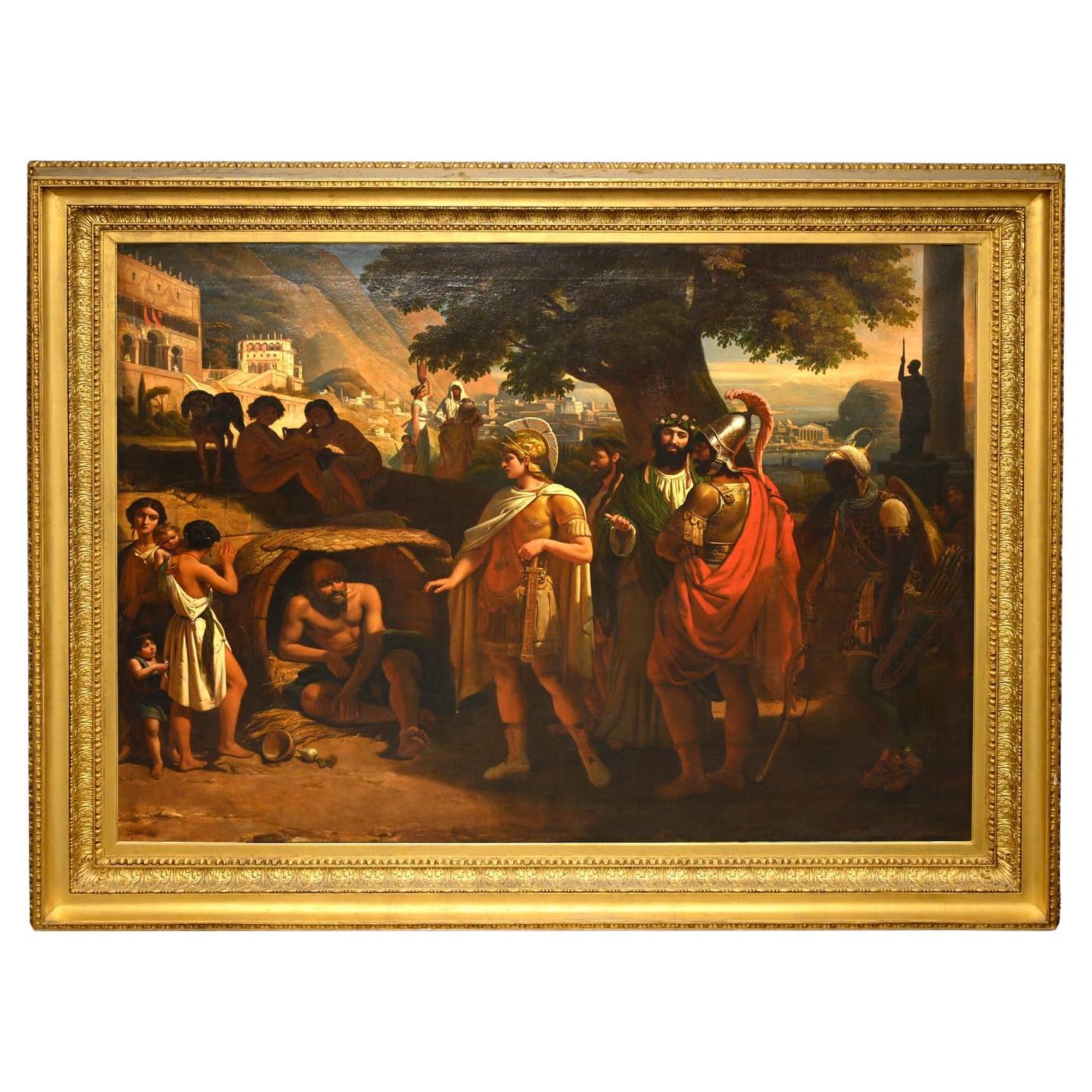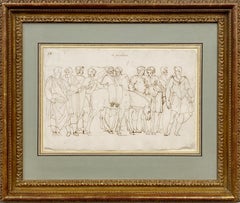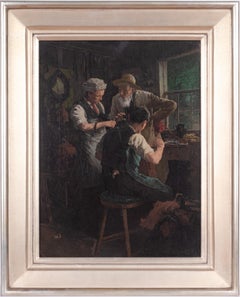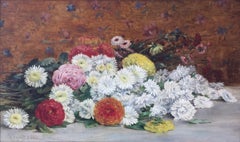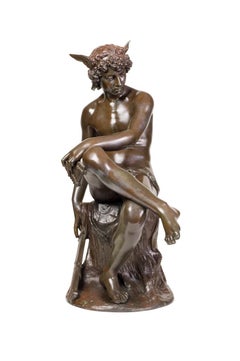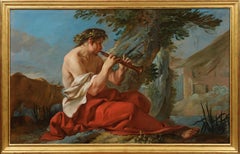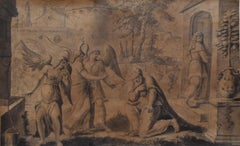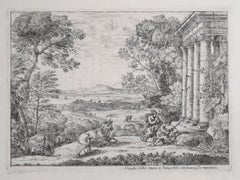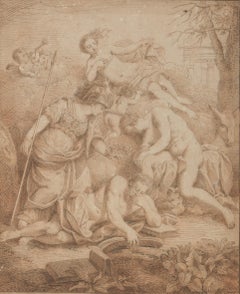Items Similar to Jupiter and Mercury received by Philemon and Baucis
Video Loading
Want more images or videos?
Request additional images or videos from the seller
1 of 20
August François Marie GorguetJupiter and Mercury received by Philemon and Baucis1891
1891
$34,000
£26,012.67
€29,749.54
CA$48,413.04
A$52,437.13
CHF 27,773.03
MX$634,410.78
NOK 349,149.95
SEK 325,481.96
DKK 222,183.18
About the Item
Canvas size: 57 3/4 x 45 1/2 inches
A striking and impressive French Academic painting in a high quality Italian style gold leaf frame.
Gorguet was an Academic French artist who was trained by Boulanger, Gerome, Bonnat and Morot. His academic training was so strong that he was asked by the Opera House to illustrate many of their posters and he made his living illustrating many books of the time. In the market today this is most of what circulates and comes to light by the artist. He was ultimately made a professor of Drawings at L’Institut.
However, Gorguet was also a Symbolist artist and did works aligned with the Art Nouveau movement. Many of these works are quite impressive but rarely have surfaced in the art market. Jupiter and Mercury Received by Philemon and Baucis is more of an Allegorical work and Gorguet switched gears to do a painting which would garner International attention at the important Concourse du Prix de Rome competition. 1891 was a year where the competition would be stiff and he knew he had to do an impressive painting with a compelling historical or allegorical content. In this painting, Gorguet is depicting their Jupiter and Mercury’s arrival at their home and the indication that Philemon and Baucis will share what they have with them despite their poverty-stricken means.
The technical execution of this work is exceptional as the figurative work is done masterfully and any small detail within the canvas demonstrates tremendous attention of subtlety of tone and modeling. An example is the strand of cloth that crosses Jupiters chest and the delicate shades of pink and gray and how it is modeled. More than ever, the academic artists of this period are to be appreciated for the quality and creativeness of their work. And the timelessness of these classical allegories are still applicable to our lives today. So we predict a turn back toward work like this as qualitatively we know it will never be done again.
Story of Jupiter and Mercury Visiting Philemon and Baucis
(one interpretation)
According to ancient Roman mythology and Ovid's Metamorphoses (8.631, 8.720.), Philemon and Baucis had lived out their long lives nobly, but in poverty. Jupiter, the Roman king of the gods, had heard of the virtuous couple, but based on all his previous experiences with humans, he had serious doubts as to their goodness.
Jupiter was about to destroy mankind but was willing to give it one final chance before starting over again. So, in the company of his son Mercury, the wing-footed messenger god, Jupiter went about, disguised as a worn and weary traveler, from house to house among the neighbors of Philemon and Baucis. As Jupiter feared and expected, the neighbors turned him and Mercury away rudely. Then the two gods went to the last house, the cottage of Philemon and Baucis, where the couple had lived all their long married lives.
Philemon and Baucis were pleased to have visitors and insisted that their guests rest before their little hearth fire. They even lugged in more of their precious firewood to make a greater blaze. Unasked, Philemon and Baucis then served their presumably starving guests, fresh fruits, olives, eggs, and wine.
Soon the old couple noticed that no matter how often they poured from it, the wine pitcher was never empty. They began to suspect that their guests might be more than mere mortals. Just in case, Philemon and Baucis decided to provide the closest they could come to a meal that was fit for a god. They would slaughter their only goose in their guests' honor. Unfortunately, the legs of the goose were faster than those of Philemon or Baucis. Even though the humans were not as fast, they were smarter, and so they cornered the goose inside the cottage, where they were just about to catch it.... At the last moment, the goose sought the shelter of the divine guests. To save the life of the goose, Jupiter and Mercury revealed themselves and immediately expressed their pleasure in meeting an honorable human pair. The gods took the pair to a mountain from which they could see the punishment their neighbors had suffered -- a devastating flood.
Asked what divine favor they wanted, the couple said that they wished to become temple priests and die together. Their wish was granted and when they died they were turned into intertwining trees.
- Creator:August François Marie Gorguet (1862 - 1927, French)
- Creation Year:1891
- Dimensions:Height: 62 in (157.48 cm)Width: 49.75 in (126.37 cm)Depth: 3.5 in (8.89 cm)
- Medium:
- Movement & Style:
- Period:
- Condition:Relined to stabilize cracks that are evident upon close inspection but completely normal to a painting of this age. Canvas is in lovely condition - ready to hang. Frame is new high quality reproduction of high value.
- Gallery Location:New York, NY
- Reference Number:Seller: 170241stDibs: LU1413210588452
About the Seller
5.0
Recognized Seller
These prestigious sellers are industry leaders and represent the highest echelon for item quality and design.
Established in 1989
1stDibs seller since 2020
43 sales on 1stDibs
Typical response time: 11 hours
- ShippingRetrieving quote...Shipping from: Stamford, CT
- Return Policy
More From This Seller
View AllLa Porcellana (A Market Scene of Porcelain Vendors)
Located in New York, NY
An old master drawing that can live in a very contemporary environment! Remarkable use of line and expression - should be enjoyed in an important spot - can grace a kitchen or livin...
Category
16th Century Old Masters Figurative Drawings and Watercolors
Materials
Ink, Handmade Paper, Graphite
In the Workshop
Located in New York, NY
This masterful and detail oriented depiction of potentially three generations of what may be leather tanners and or saddle-makers in their workshop is a very American genre scene tha...
Category
Early 1900s American Realist Interior Paintings
Materials
Canvas, Oil
The Freshly Picked Bouquet
Located in New York, NY
An exquisite and technically superb floral work depicting flowers just laden on a table. By French Academic artist P. FRANC LAMY, it's In nice condition an...
Category
19th Century French School Still-life Paintings
Materials
Oil
Seated Mercury, or Hermes - God of Speed
Located in New York, NY
This Mercury by Montagne has lovely patina and surface and is a pleasingly different depiction of Winged speed as he is seated! It is an arresting pose and elegant and covers all fa...
Category
1860s Academic Figurative Sculptures
Materials
Bronze
Mother and Child
Located in New York, NY
Watercolor on paper laid on board: An exceptional watercolor in terms of quality and presentation. During this earlier period of Day's career he exhibited extensively and was inspir...
Category
1910s Pre-Raphaelite Figurative Paintings
Materials
Watercolor, Board, Archival Paper
Roses, Historic Botanical
Located in New York, NY
A most popular drawing master, Lesourd-Beauregard exhibited extensively at the Paris Salons, and was awarded a medal in 1842.
He is famous for his in depth botanical studies done in...
Category
1850s French School Paintings
Materials
Oil, Panel
You May Also Like
Mercury and Io, a rediscovered painting by Jean-Baptiste Marie Pierre (ca. 1740)
Located in PARIS, FR
We would like to thank Mr. Nicolas Lesur for confirming the autograph nature of the entire composition after a direct examination of the painting on November 27, 2024.
This painting...
Category
1740s Old Masters Figurative Paintings
Materials
Canvas, Oil
François Boitard (1670-1715) Abraham and the Three Angels, original drawing
Located in Paris, FR
François Boitard (1670-1715)
Abraham and the Three Angels,
Signed lower left "F Boitard (...) fecit (...)"
28 x 44 cm
Pen and ink on yellow prepared paper...
Category
Early 1700s Old Masters Figurative Drawings and Watercolors
Materials
Ink
Mercury and Argus (2nd State)
Located in Chicago, IL
References:
Blum 38 II/IV
Robert-Dumesnil 17 I/III
Russell 49 II/IV
Mannocci 42 IIb/III
Category
17th Century Old Masters Prints and Multiples
Materials
Etching
Allegorical Scene - Sepia Drawing Attribute to L.F. Dubourg -Early 1700
Located in Roma, IT
Allegorical Scene is an original modern artwork attributed to the Louis Fabricius Dubourg in the first half of the XVIII Century.
Original sepia drawing...
Category
Early 18th Century Figurative Drawings and Watercolors
Materials
Ink
PERSEO AND ANDROMEDA- In the Manner of A.R. Mengs- Italy- Figurative Painting
By Eugenio De Blasi
Located in Napoli, IT
Perseo and Andromeda - Oil on canvas cm.120x80, Eugenio De Blasi, Italy, 2005.
Gold gilded wooden frame available on request
This is his reinterpretation of a large ancient painting...
Category
Early 2000s Old Masters Figurative Paintings
Materials
Canvas, Oil
Jean-Auguste BARD, Alexander and Diogenes, Salon of 1839
By Jean-Auguste Bard
Located in SAINT-OUEN-SUR-SEINE, FR
This oil on canvas, painted by Jean-Auguste Bard in 1838, was exhibited at the Salon the following year, as entry number 81.
Jean-Auguste Bard (1812-1862) was a student of the renow...
Category
Antique Early 19th Century French Neoclassical Paintings
Materials
Canvas
More Ways To Browse
Pair Oil Paintings Gold Frame
Italian Gold Leaf Frame
Old Couple
Antique Wine Pitcher
Mercury God
Jupiter Painting
Black Framed Antique Oil Paint
Floral Still Life
Signed Landscape Paintings
Beautiful Mid Century Oil Paintings
Listed Artists
Beach Landscapes
Miami Beach
Textured Acrylic
Vintage California Art
Graffiti Art
Mark Rothko
Antique American Painting
